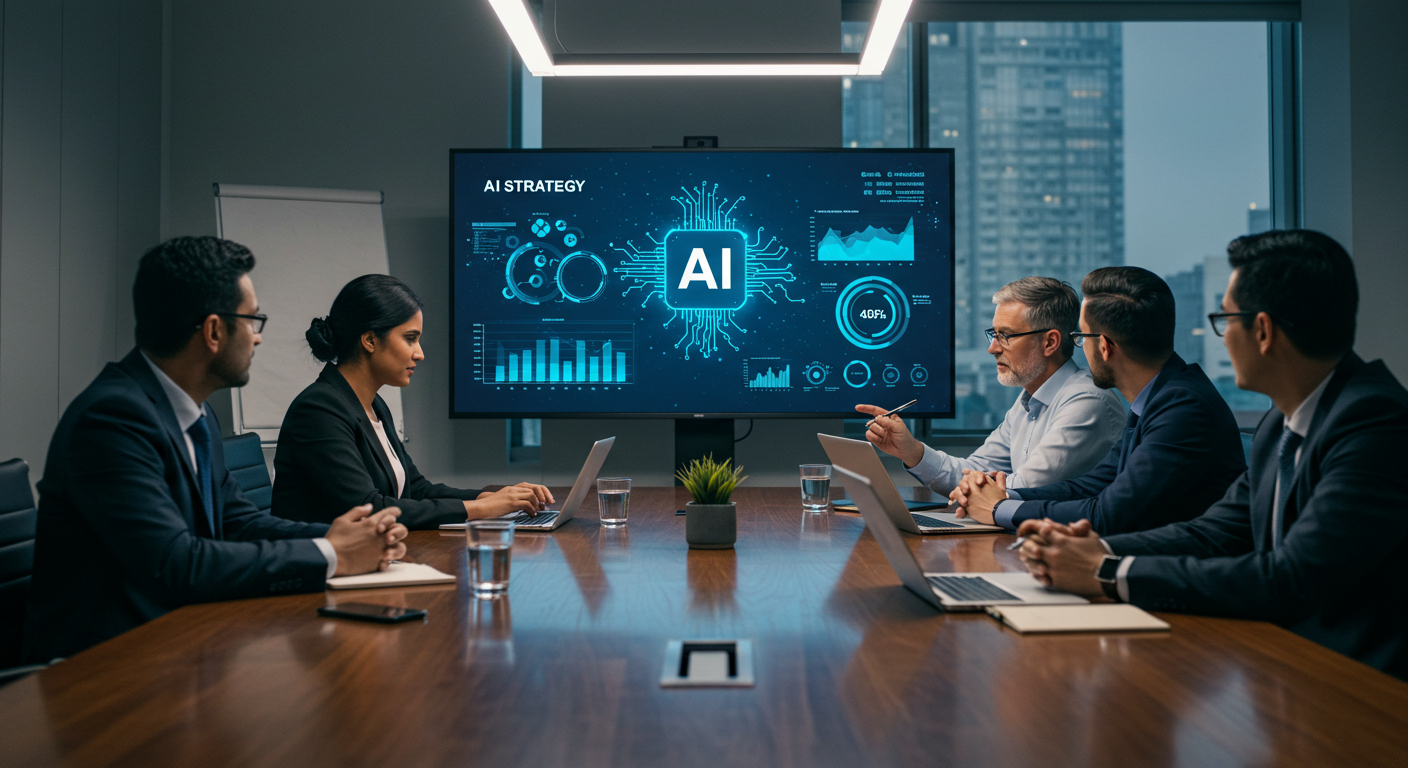How RAG Is Helping Businesses Get More Reliable Answers from AI
by Hasan Khan, Last updated: June 18, 2025, Code:

This blog explores Retrieval-Augmented Generation (RAG), a powerful AI approach that combines real-time data retrieval with generative capabilities. It highlights how RAG is transforming industries like healthcare, finance, and legal by providing accurate, context-aware, and up-to-date AI outputs for better decision-making and improved customer experiences.
As the world increasingly adopts AI technologies to automate tasks, answer questions, and drive decision-making, one challenge persists: accuracy. Traditional AI models, trained on static data, often struggle to keep up with evolving information. This limitation has led to a growing reliance on RAG use cases, practical deployments of Retrieval-Augmented Generation that enable AI to produce more accurate, relevant, and context-aware outputs.
In this blog, we’ll explore in detail what is RAG, examine the most impactful RAG applications, and analyze how businesses across industries are using these capabilities to build trustworthy AI systems that deliver real-time, high-precision insights.
What is RAG?
Before diving into real-world RAG use cases, it's essential to understand what RAG is.
Retrieval-Augmented Generation (RAG) is an advanced AI architecture that merges generative AI with real-time data retrieval. Unlike traditional models that generate responses based solely on pre-trained datasets, RAG systems first retrieve relevant, up-to-date information from trusted sources such as:
- Internal knowledge bases
- Web documents
- Structured databases
- Public or private APIs
Then, this retrieved information is combined with generative algorithms to produce answers that are not only contextually rich but also grounded in current facts.
The result? Highly accurate, real-time, and context-sensitive outputs which are critical for industries where decisions must be backed by the most recent and relevant data.
The Core Benefits of RAG Use Cases
Before diving into the specific benefits of using Retrieval-Augmented Generation (RAG), it’s important to understand the broader context in which these advantages emerge.
As organizations increasingly adopt AI to manage, synthesize, and respond to information, RAG presents a highly effective method for combining the generative power of large language models with the factual grounding of external knowledge sources.
This blend is instrumental in enhancing both the accuracy and relevance of AI outputs across a variety of operational scenarios.
1. Real-Time Knowledge Access
Unlike static models, RAG use cases allow AI systems to dynamically access updated content. This real-time capability is invaluable in fast-moving fields like finance, law, healthcare, and customer support.
2. Reduction in AI Hallucinations
One of the most serious pitfalls of generative AI is hallucination, the generation of plausible-sounding but false or outdated information. Hallucination in generative AI occurs because models generate text based on patterns in training data rather than verified facts, leading them to "guess" when uncertain.
Additionally, they lack real-time grounding in external knowledge, so they may produce outdated or fabricated content when data is missing or ambiguous. RAG applications help mitigate this risk by grounding outputs in verified, external data sources.
3. Context-Aware Responses
With access to current and domain-specific data, RAG models generate responses that are highly relevant to the user's specific query, scenario, and context. This personalization significantly enhances the user experience, delivering accurate and useful answers that feel responsive and tailored a critical advantage in customer-facing applications.
4. Scalability and Flexibility
Enterprises can integrate RAG into their existing IT stack, scaling it across departments while customizing retrieval sources per use case. Whether for compliance checks or customer engagement, RAG use cases are highly adaptable.
RAG Applications: Where Real-Time AI Meets Industry Needs
Let’s explore how RAG applications are reshaping multiple verticals with live data integration and advanced reasoning capabilities.
Legal Industry
Legal professionals rely on precedent, statutes, and constantly changing regulations. Traditional AI tools often fall short due to outdated training data.
RAG use cases in law include:
- Real-time retrieval of case law and legal commentary
- Drafting contracts and legal briefs with up-to-date citations
- Automating compliance reporting based on the latest regulations
By integrating RAG, law firms avoid costly legal errors and increase productivity through AI-augmented workflows.
Healthcare and Life Sciences
In medicine, RAG applications support everything from diagnostics to research:
- Pulling the latest clinical guidelines for accurate diagnoses
- Assisting with treatment planning using up-to-date patient data and research papers
- Summarizing complex trial results for medical professionals
In a field where misinformation can mean life or death, RAG use cases help build safer, evidence-driven AI systems.
Finance and Banking
The financial sector thrives on timeliness and precision, two pillars strengthened by RAG.
Key RAG use cases in finance include:
- Real-time risk assessments and market forecasts
- Generating investment summaries with current data
- Assisting in fraud detection using live transaction records
By combining retrieval with generation, RAG ensures financial advice and reports are accurate and regulation-compliant.
Customer Support
Modern consumers expect fast, relevant, and reliable service. RAG applications are transforming AI-driven support through:
- Real-time access to updated help documentation and product info
- Accurate ticket resolution based on evolving FAQs
- Contextual escalation suggestions for complex queries
These RAG use cases result in reduced support costs, faster response times, and higher customer satisfaction.
Government and Policy
Governments use RAG-powered systems to ensure decisions are based on the most current legislation, census data, and citizen feedback. Common RAG applications in the public sector include:
- AI-driven policy drafting using updated statutes
- Real-time monitoring of public sentiment and feedback
- Compliance automation and reporting
How RAG Works: A Technical Breakdown
The RAG process consists of four core stages:
- Query Input: A user inputs a question or prompt.
- Retrieval Engine: The system queries external sources for relevant documents.
- Fusion Layer: Retrieved content is fused with the original query.
- Generation: The generative model crafts an output grounded in the retrieved facts.
This pipeline ensures that RAG applications deliver reliable, well-referenced outputs in real time.
Why Traditional AI Falls Short and Why RAG Matters
Conventional AI models are powerful but static. They become outdated as soon as their training data becomes obsolete. For example, a traditional AI trained in 2022 cannot answer questions about events in 2025.
RAG use cases solve this by retrieving real time data and using it to generate answers depending on the situation. This fusion of retrieval and generation leads to:
- Up-to-date content generation
- Reduced reliance on pre-trained data
- More diverse, contextual insights
This is critical in scenarios where accuracy and timeliness define success from diagnosing diseases to informing policy.
Enterprise Adoption of RAG Use Cases
Businesses adopting RAG use cases report benefits like:
- Correct and accurate responses
- Lower risk of misinformation
- Improved customer experience
With platforms like VIDIZMO, companies can leverage RAG applications without building infrastructure from scratch. VIDIZMO offers enterprise-grade AI tools built on Microsoft Azure, including:
- AI transcription and translation
- PII redaction and media indexing
The Future of AI Lies in RAG Use Cases
As AI becomes integral to daily business operations, the demand for accuracy, relevance, and trustworthiness continues to rise. RAG use cases deliver on these demands by giving AI the ability to think in real time powered by fresh, relevant data.
From healthcare to finance, legal to customer support, the integration of RAG applications ensures that AI systems are no longer guessing they are grounded, informed, and ready for enterprise use
Ready to future-proof your AI strategy with RAG? Contact VIDIZMO today to discover how our Azure-powered solutions can help your business lead with intelligent, trustworthy AI.
Key Takeaways
- RAG use cases are revolutionizing AI by combining generative AI with real-time data retrieval, significantly improving accuracy and reliability.
- Understanding what is RAG helps businesses realize the potential of AI systems that pull live, trusted information before generating responses.
- Across industries such as healthcare, finance, legal, and customer support, RAG applications ensure AI outputs are context-aware, up-to-date, and trustworthy.
- By reducing AI hallucinations and misinformation, RAG use cases build greater user trust and satisfaction with AI-powered solutions.
- Enterprises benefit from the scalability, flexibility, and enhanced decision-making capabilities enabled by RAG applications.
- The rise of multimodal AI further expands the scope of RAG use cases, enabling richer data interpretation from text, audio, video, and images.
- Platforms like VIDIZMO offer ready-to-use solutions that integrate RAG applications, helping organizations deploy reliable AI faster and more efficiently.
People Also Ask
What is RAG and how does it improve AI accuracy?
RAG, or Retrieval-Augmented Generation, enhances AI by combining real-time data retrieval with generative capabilities. By accessing live, trusted sources before generating answers, it reduces hallucinations and improves reliability. Understanding what is RAG is essential for building more accurate AI solutions. This approach is central to the success of modern RAG use cases.
Where are RAG use cases most beneficial in business?
RAG use cases shine in industries like healthcare, finance, law, and customer support. They help deliver real-time, context-aware AI outputs that improve decision-making and compliance. Businesses benefit from enhanced trust and efficiency using tailored RAG applications. These use cases ensure AI always references up-to-date information.
What is the main advantage of RAG over traditional AI models?
The key advantage of RAG is its access to real-time data before generating responses. Unlike traditional models, it reduces misinformation by grounding answers in verified facts. This makes RAG applications more trustworthy and precise. That’s the power behind practical RAG use cases across industries.
How do RAG applications reduce AI hallucinations?
RAG applications fetch external data in real time, grounding responses in factual sources. This process dramatically lowers the risk of AI hallucinations or made-up answers. It’s a critical benefit in sectors where accuracy matters most. Many effective RAG use cases rely on this to ensure trustworthiness.
What industries are leading adopters of RAG use cases?
Healthcare, legal services, finance, and education are rapidly embracing RAG use cases. These sectors rely heavily on real-time data and precision in their AI tools. RAG applications help meet those demands with accurate, timely responses. Understanding what is RAG is vital to driving innovation in these fields.
How do RAG applications enhance customer support systems?
By accessing updated knowledge bases, RAG applications empower AI chatbots with relevant answers. This improves response accuracy and reduces the need for human escalation. Many RAG use cases focus on automating customer service effectively. Knowing what is RAG helps businesses provide better support experiences.
Why should enterprises invest in RAG use cases?
RAG use cases offer enhanced AI accuracy, compliance, and user trust at scale. They improve operational workflows across data-sensitive environments. From legal insights to real-time analytics, RAG applications drive enterprise value. Investing in RAG means knowing exactly what is RAG and how to deploy it.
Can RAG use cases be customized for different business needs?
Yes, RAG applications are highly flexible and can be tailored to any industry. Businesses can plug in custom data sources and domains for accurate insights. Scalable RAG use cases support legal, healthcare, finance, and more. Understanding what is RAG helps in designing solutions that align with goals.
What is RAG’s role in improving AI decision-making?
RAG supports decisions by injecting fresh, authoritative data into AI responses. This ensures outputs are timely, relevant, and grounded in real-world context. It’s why so many RAG use cases are used in high-stakes fields. Knowing what is RAG reveals its potential to power smarter AI choices.
How do RAG use cases evolve with multimodal AI systems?
Modern RAG applications are expanding to handle text, visuals, audio, and video. This makes RAG critical in AI systems needing insights from diverse formats. RAG use cases in healthcare and education increasingly use multimodal data. Understanding what is RAG helps prepare for the future of AI innovation.
Jump to
You May Also Like
These Related Stories

The AI Readiness Guide: Prepare Your Organization for AI Adoption

How Enterprises Are Driving Innovation With Generative AI in 2025



No Comments Yet
Let us know what you think